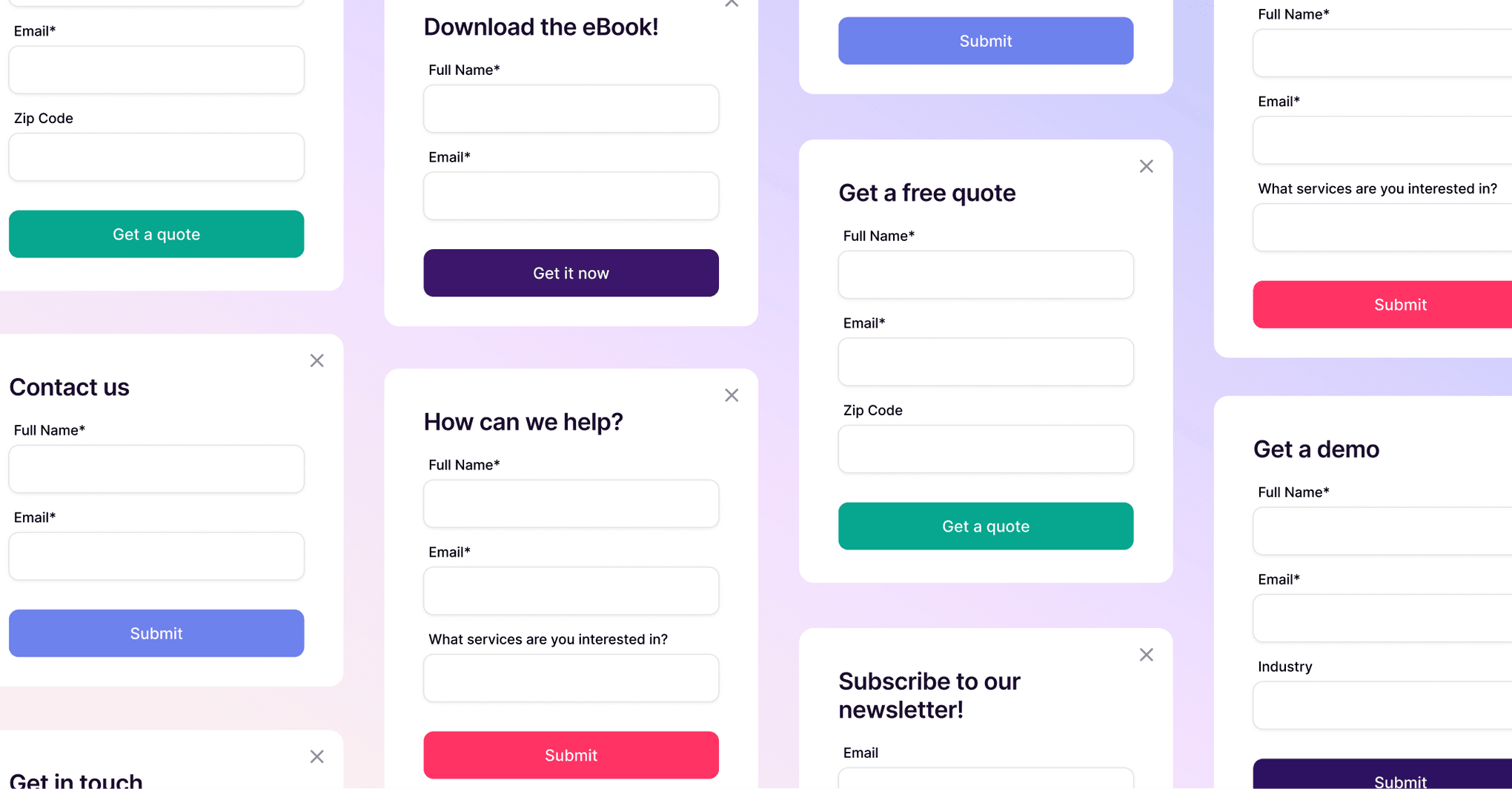Copper Staff
Contributors from members of the Copper team
Have you ever been in this scenario?
Have you ever needed to share a webpage or blog post with a customer or coworker via Gmail? You start drafting your message, paste the URL, and then realize it looks messy—a long string of random numbers, letters, and symbols cluttering up your email.
Instead of a clean, professional Gmail hyperlink, you're left with an unsightly link that can appear sloppy. While this might be fine when sharing a viral cat video with friends, it's far from ideal when communicating with business partners or customers.
Not only is it ugly, but it can also look sloppy — something that might be okay when sending your spouse the latest viral cat video, but not a good look when you’re sending a message to a business partner or customer.
Luckily, Gmail makes it easy to hyperlink to text or images within your messages and email signature. A hyperlink allows you to hide the full URL behind the text or image of your choosing, making links seem cleaner and more organized:
In this article, we'll go through step-by-step instructions to create hyperlinks anywhere in your Gmail message:
How to hyperlink in Gmail
A text hyperlink is probably the most common and easiest way to add a link to your email in Gmail. While you can create a hyperlink through both the web and mobile applications, the web is much easier.
We’ll walk through how to create a hyperlink on both, but we’d recommend using the web application if you have access to a laptop or desktop computer.
How to create a text hyperlink in the Gmail web app
To get started, log in to your Gmail account and open up a new message. Draft your message as you normally would:
Now, we need to choose want we want the anchor text (the text that will hide the hyperlink) for the link to be.
For the sake of this example, we’re going to keep things simple and use “this article.”
To add the link, head back to your message and highlight the anchor text you’ve chosen and hit the “Insert link” button along the bottom formatting bar:
This will bring us the following pop-up:
You can also get to this popup with a keyboard shortcut.
To use the keyboard shortcut, highlight the anchor text the same way as before. Instead of hitting the “Insert link” button, hit Ctrl+K if you’re on a PC and Cmd+K if you’re on a Mac. (Here are 26 other Gmail shortcuts to check out too!)
The above edit link popup should appear.
In the “Web address” line, paste the link you want to include:
You can make sure the link works by hitting “Test this link.”
Notice that you can also edit your display text within this window. In the “Text to display” line you can make any changes to the anchor text of your link.
Once you’re happy with the link and display text, hit “OK":
See how the text you previously selected has now transformed into a hyperlink?
To check the details or make changes, click the link once.
You’ll see a menu offering options to go to the linked page, change your anchor text, or remove the link:
When your hyperlink looks the way you want it to, you’re ready to hit send!
How to create a text hyperlink in the Gmail mobile app:
As we touched on earlier, the Gmail mobile app doesn’t make it particularly easy to add a hyperlink. (The Gmail app actually doesn’t have a clear formatting option for adding links.)
However, there’s a workaround that gets the job done.
To get started, open the Gmail mobile app and compose a new message.
Instead of starting to write your message, paste the URL of the page you’d like to link to in the message body. Make sure to include “https://www.” before the domain:
Notice how the URL doesn’t turn into a link yet. To transform this URL into a clickable hyperlink, you’ll need to save the message as a draft.
Hit the X in the upper left corner to close the message. The app should automatically send you back to your inbox and save the message as a draft.
To find your draft list, hit the three lines in the upper left hand corner to open the sidebar. Scroll down to find “Drafts.”
The message you just saved with your link should be the top result:
Select this draft to open it back up.
You’ll see that the URL has now changed into a clickable link:
Now our goal is to change this ugly URL into a hyperlink.
Unlike the web app, there isn’t a built-in tool for changing the URL into a hyperlink. However, you can edit the text within the email message and keep the link in tact.
To do this, move your cursor so it appears somewhere in the middle of the URL — if you try to add text at the beginning or end of the URL, it won’t pick up the link:
Start to type the text that you want to be the anchor text for your hyperlink.
Don’t worry about changing the URL. The link destination will stay the same, even if you change the link:
You want to make sure your anchor text is part of the blue underscored link. If your anchor text is appearing as black body text, try again at a different part within the URL.
Once your anchor text is in place, you can delete the rest of the URL before and after the anchor text:
Now you have your hyperlink and you can type the rest of your message surrounding your anchor text:
Again, we’d recommend creating your hyperlinks on the web app because it’s much easier and more efficient. However, if you only have access to a mobile device, this will get the job done — just with a few extra steps.
How to create an image hyperlink in Gmail
An image hyperlink is a great way to make your link stand out even more in a message.
For example, if you wanted to feature a promotion or discount, an image hyperlink can act as a call-to-action button to encourage the customer to click through.
Unlike text hyperlinks, there isn’t a clear workaround for creating an image hyperlink in the Gmail mobile app. However, adding an image hyperlink to your email messages through the Gmail web app is simple.
Just like in our text hyperlink example, start with opening Gmail and composing a new message.
Write your message, including adding the image by hitting the “Insert image” button along the bottom formatting bar:
This will open a popup where you can find and select the image you want to add:
After selecting your image, it’ll automatically be added. Before selecting the file, double check that your image will be inserted “inline” rather than as an attachment. This will add the image into the actual body of the message, rather than attaching it as a downloadable file.
The image is automatically resized for “Best fit,” but you’re free to resize, move, or edit the image further to get the design you’re after.
Gmail offers quick resizing to make the image smaller or restore it to the original size. However, you can also click and drag the corners of the image to resize it to your unique specifications.
Once you’re happy with the image, select and highlight it.
You need the entire image to turn blue. If you just have the blue box outlining the image, it hasn’t been selected properly.
Now hit the “Insert link” button along the bottom formatting bar. Or, you can use the shortcut Cmd+K or Ctrl+K.
This creates a .jpeg link for the image.
To point the image link towards the website you want the customer to go to, select “Change” in the menu.
This will bring up the same Edit Link popup as used in the text hyperlink example:
Erase the current URL and replace it with the URL you want the image to link to and hit “OK.”
If you select the image in the body message again, you should see that the “Go to” link has changed to the destination you’ve selected:
When the image and link are the way you want them, your image hyperlink is all set and ready to send.
And with Copper, we've made adding inline images even easier!
And now, adding images in your emails using Copper is even better than before! Now, you can jazz up your emails with inline images, making your messages not just informative but also visually engaging. Here’s how you can make the most of this cool feature:
- Make your emails pop: Want to grab attention? Add a logo, a chart, or even a funny cat picture (no judgment here!). A well-placed image can turn a plain email into something that really stands out.
- Boost clicks and engagement: Did you know you can make your images clickable? Link them to your website, a landing page, or any spot you want your recipients to visit. It's a great way to guide your audience where you want them to go.
- Keep it accessible: Don’t forget to add alt text to your images! This ensures everyone, even those using screen readers, can understand your message. Plus, if the image doesn’t load, they’ll still get the gist.
Creative ways to use inline images
Inline images aren’t just for show—they can really help you communicate better. Here’s how you can use them across different industries:
- For everyone: Celebrate special occasions with a fun "Happy Birthday" graphic or a congrats image when a client hits a big milestone.
- For agencies: Show off your portfolio with stunning images or introduce your team with clear headshots and bios.
- For construction: Wow potential clients by including photos of your best projects or help them choose finishes by showing material examples right in your email.
- For consultants: Make complex ideas easier to understand by adding screenshots, or preview documents to give clients a visual sneak peek.
These are just a few ways to get started. Inline images in Copper are your secret weapon to making emails more engaging, informative, and just plain fun. Get creative and watch your emails come to life!
How to create a hyperlink in your Gmail signature
The tips we’ve given so far apply only to adding text or image hyperlinks to Gmail messages. But what about adding hyperlinks to your Gmail signature?
Your signature appears in every email you send, making it the perfect place to add links to your website, social media pages, or even a top piece of content you really want to show off. You can do this with both text and image hyperlinks.
Both begin the same way — by opening your signature settings in Gmail.
To find them, log in to the Gmail web app. On the home dashboard, select the gear icon in the upper right hand corner:
Select “Settings” in the drop down menu:
Under the “General” tab, scroll down until you find the “Signature” editing box:
This is where you’ll add whatever content you want to share with your email recipients––including both text and image hyperlinks.
How to add a text hyperlink to your Gmail signature
Adding a text hyperlink to your Gmail signature is pretty similar to the steps you’d follow to add a text hyperlink to a message body.
To add a text hyperlink, begin by adding all the text you’d like to be clickable:
Select your anchor text and hit the “Insert link” button in the formatting bar:
You could also use the Ctrl+K or Cmd+K keyboard shortcut we mentioned earlier.
This will bring up the same Edit Link popup where you can add the URL for your hyperlink:
When the link is how you want it, click “OK” and your hyperlink will be added to your signature:
How to add an image hyperlink to your Gmail signature
Using image hyperlinks in your Gmail signature allows you to add multiple hyperlinks in a clean, well-designed way.
For example, you can add hyperlinks with your logo linking to your webpage, or logos to social media platforms to display your profiles.
Adding an image hyperlink to your Gmail signature is similar to the steps you’d follow to add an image hyperlink to an email message. Start by adding your image to the signature text box by clicking the “Insert image” option in the format bar:
This will open the “Add an image” popup where you can upload the image you want to hyperlink:
Find and select the file you want to upload:
You can use the Gmail automatic resizing options to make your image small, medium, or large, or maintain its original size. It’s a good idea to send yourself a test message before finalizing the image size, so you can see how big or small it’ll look like for your recipients.
To add a hyperlink to the image, click the image. It should have a blue highlight over top.
With the image still highlighted, click the “Link” option in the format bar (or use the Cmd+K or Ctrl+K shortcut):
In the “Edit Link” popup, you can now add the URL to the page you’d like to hyperlink to:
Hit “OK” and the image will become a hyperlink. You can double check that the hyperlink works by clicking the image in the signature text box:
Make sure the “Go to link” address is correct.
When you’re done adding hyperlinks to your Gmail signature, don’t forget to scroll down to the bottom of the page and hit “Save Changes.”
Pro-tip: Also read: 3 ways to add a logo to a signature in Gmail.
How will you create hyperlinks in Gmail messages and signatures?
Adding hyperlinks is an easy way to make your messages seem more professional. Not only that, but hyperlinks can make your messages more fun — helping you grab attention from customers or clients.
Whether they’re added to the message itself or your email signature, knowing how to hyperlink both text and images is a great skill to have.






